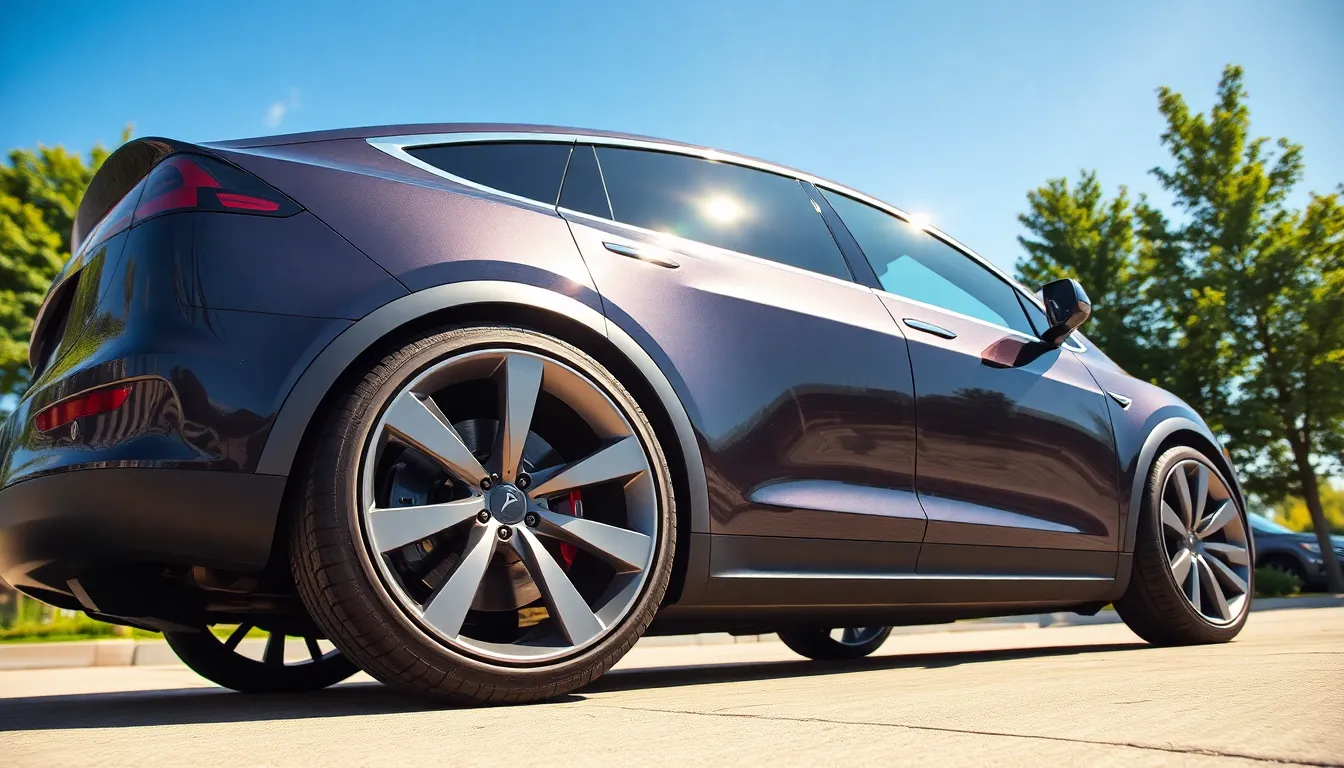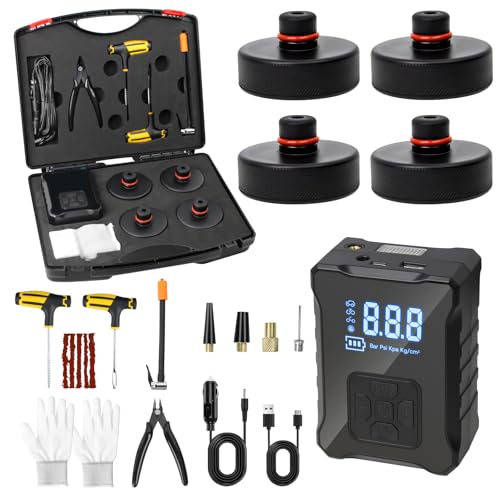When we’re shopping for new tires for our Tesla Model X, understanding the correct tire size becomes crucial for maintaining optimal performance and safety. The Model X comes with different tire configurations depending on the year and trim level, and choosing the wrong size can affect everything from range efficiency to handling dynamics.
We’ve noticed many Model X owners struggle with deciphering tire size specifications and understanding which options work best for their exact vehicle. Whether you’re replacing worn tires or considering an upgrade, knowing your exact tire requirements ensures you’ll maintain the vehicle’s impressive performance capabilities while maximizing your investment.
Getting the right tire size isn’t just about fitment – it’s about preserving the sophisticated engineering that makes the Model X such an exceptional electric SUV. We’ll break down everything you need to know about Model X tire sizes to help you make an well-informed choice that keeps your Tesla performing at its peak.
Tesla Model X Tire Size Specifications
Tesla Model X tire specifications vary across trim levels and model years, with each configuration engineered to optimize performance characteristics. We’ve compiled comprehensive data on factory tire sizes to help you identify the correct specifications for your exact Model X variant.
Standard Factory Tire Sizes by Trim Level
Tesla Model X trim levels feature distinct tire size configurations that align with their performance profiles and intended use cases.
Model X Standard Range (2022-2024)
- Front and Rear: 265/45R20
- Wheel Size: 20 x 8.5 inches
- Load Index: 108
- Speed Rating: H (130 mph)
Model X Long Range (2021-2024)
- Front: 265/35R22
- Rear: 285/35R22
- Wheel Size: 22 x 9.0 inches (front), 22 x 10.5 inches (rear)
- Load Index: 101 (front), 106 (rear)
- Speed Rating: Y (186 mph)
Model X Plaid (2021-2024)
- Front: 265/35R22
- Rear: 285/35R22
- Wheel Size: 22 x 9.0 inches (front), 22 x 10.5 inches (rear)
- Load Index: 101 (front), 106 (rear)
- Speed Rating: Y (186 mph)
Pre-2021 Model X Variants
- 245/45R20 (20-inch configuration)
- 265/35R22 (22-inch configuration)
- Tire widths range from 245mm to 285mm depending on wheel position
| Model Year | Trim Level | Front Tire Size | Rear Tire Size | Wheel Diameter |
|---|---|---|---|---|
| 2022-2024 | Standard Range | 265/45R20 | 265/45R20 | 20 inches |
| 2021-2024 | Long Range | 265/35R22 | 285/35R22 | 22 inches |
| 2021-2024 | Plaid | 265/35R22 | 285/35R22 | 22 inches |
| 2016-2020 | 75D/100D | 265/45R20 | 265/45R20 | 20 inches |
| 2016-2020 | P100D | 265/35R22 | 285/35R22 | 22 inches |
Wheel and Tire Configuration Options
Tesla offers multiple wheel and tire packages for Model X variants, each designed to balance aesthetics, performance, and efficiency considerations.
20-Inch Cyberstream Wheels
- Tire Size: 265/45R20
- Benefits: Enhanced ride comfort, improved range efficiency
- Applications: Standard Range trim, optional for Long Range
- Sidewall height provides better impact absorption on rough surfaces
22-Inch Turbine Wheels
- Front: 265/35R22
- Rear: 285/35R22
- Benefits: Sporty appearance, enhanced handling precision
- Applications: Standard on Long Range and Plaid trims
- Lower sidewall profile delivers improved steering response
Staggered vs Square Setups
Square configurations use identical tire sizes front and rear (265/45R20), while staggered setups feature wider rear tires (265/35R22 front, 285/35R22 rear). Staggered configurations optimize traction distribution for high-performance driving scenarios.
All-Season vs Summer Tire Options
All-season tires come standard on most Model X configurations, providing year-round versatility in moderate climates. Summer performance tires offer superior grip and handling characteristics but aren’t suitable for winter conditions below 45°F.
Tire Pressure Monitoring Integration
Each Model X tire size configuration includes integrated TPMS sensors that communicate with the vehicle’s monitoring system. Replacement tires must accommodate these sensors to maintain proper pressure monitoring functionality.
Performance Impact of Different Tire Sizes
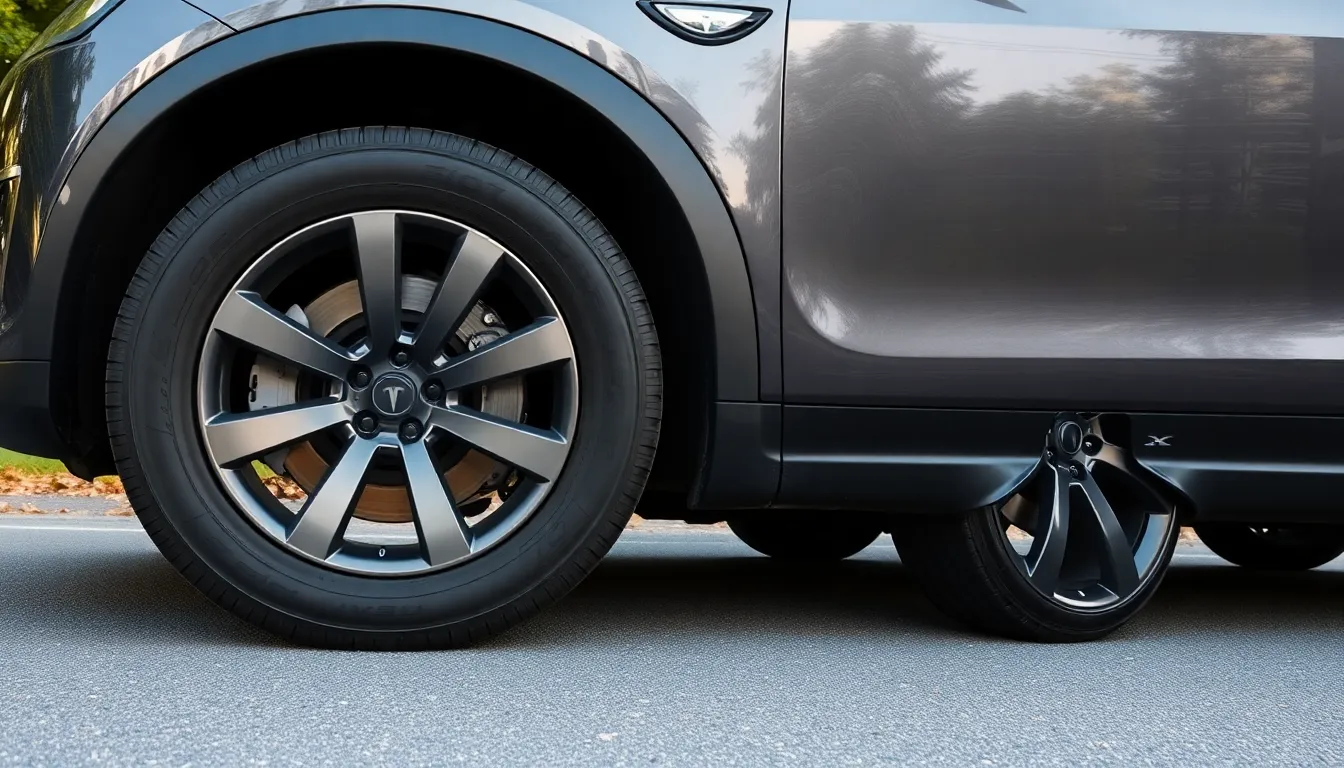
Different tire sizes create distinct performance characteristics that affect your Tesla Model X’s driving dynamics and efficiency. We’ll examine how 20-inch and 22-inch tire configurations influence your vehicle’s range and handling capabilities.
Range and Efficiency Considerations
20-inch tires with their taller sidewalls and narrower tread widths create less rolling resistance compared to their 22-inch counterparts. This reduced resistance translates to enhanced electric range for daily driving scenarios. Larger 22-inch wheels increase both aerodynamic drag and rolling resistance, which can reduce your Model X’s overall efficiency.
The weight difference between wheel sizes impacts energy consumption patterns significantly. 22-inch setups typically weigh more than 20-inch configurations, requiring additional energy for acceleration and braking operations. Tire construction materials on larger wheels also contribute to slightly higher energy consumption rates.
For owners prioritizing maximum range efficiency, 20-inch tires offer the optimal balance between performance and energy conservation. Continental CrossContact LX Sport tires in 265/45R20 108V XL and 275/45ZR20 110V XL specifications deliver reliable efficiency metrics for extended driving ranges.
Handling and Ride Quality Effects
22-inch tires deliver superior road grip and steering precision through their shorter sidewall construction. The reduced tire flex enhances cornering responsiveness and high-speed stability, benefiting drivers who prefer ever-changing driving styles. But, this firmer setup transmits more road imperfections to the cabin, creating a less comfortable ride on rough surfaces.
20-inch tires prioritize comfort through their taller sidewall design, which cushions impacts from road irregularities more effectively. The increased sidewall height provides better shock absorption but may result in slightly less precise handling during aggressive cornering maneuvers.
Tire width variations between front and rear positions affect traction characteristics differently. The 22-inch configuration uses 265/35R22 front and 285/35R22 rear sizes, with wider rear tires providing enhanced traction but potentially increasing road noise levels. This staggered setup optimizes grip distribution while maintaining the Model X’s performance handling characteristics.
Best Tire Brands and Models for Tesla Model X
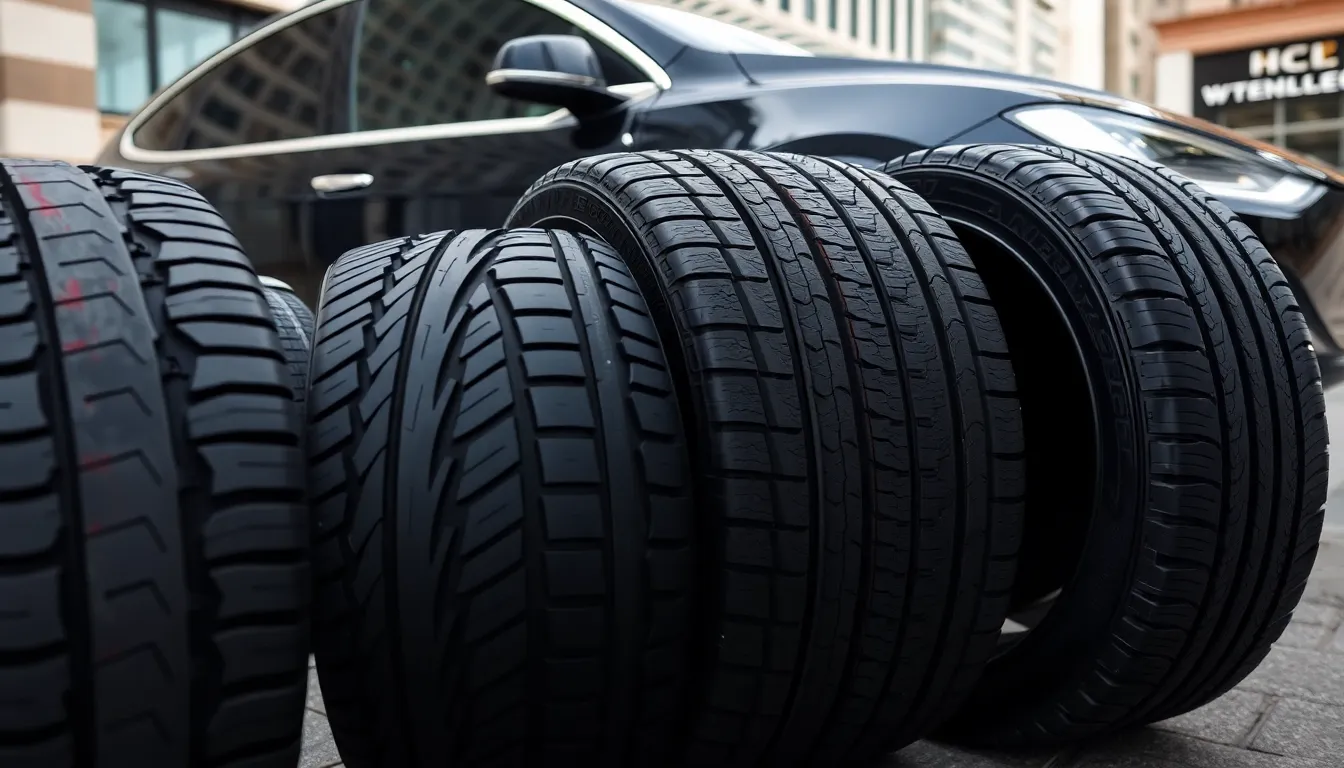
Selecting premium tire brands ensures optimal performance and safety for your Tesla Model X. We’ve identified the top manufacturers that deliver exceptional quality across different driving conditions and seasonal requirements.
All-Season Tire Recommendations
Continental CrossContact LX Sport provides the ideal balance between comfort and performance for 20-inch wheels. These tires come in 265/45R20 and 275/45R20 sizes specifically designed for Tesla Model X configurations. Continental AllSeasonContact LS delivers year-round traction and enhanced durability for drivers prioritizing versatility.
Pirelli Cinturato P7 offers an excellent blend of comfort efficiency and performance suitable for all-season use. Goodyear Assurance CS Fuel Max provides balanced performance while maximizing fuel efficiency for extended range capabilities. Both options maintain consistent grip across varying weather conditions without compromising ride quality.
Performance and Winter Tire Options
Michelin Pilot Sport tires excel in high-speed driving scenarios and come available in various Tesla Model X compatible sizes. These performance-focused tires deliver superior road grip and handling precision for drivers who prioritize ever-changing driving experiences.
Michelin Pilot Alpin PA4 specializes in winter conditions offering superior grip and control on snow and ice. Nokian Hakkapeliitta R3 provides excellent winter performance with exceptional durability ratings for harsh climate conditions. Both winter tire options maintain Tesla’s advanced traction control systems while ensuring maximum safety during cold weather driving.
| Tire Brand | Model | Best Use | Available Sizes |
|---|---|---|---|
| Continental | CrossContact LX Sport | All-Season | 265/45R20, 275/45R20 |
| Michelin | Pilot Sport | Performance | Various sizes |
| Pirelli | Cinturato P7 | All-Season | Multiple configurations |
| Michelin | Pilot Alpin PA4 | Winter | Cold weather sizes |
| Nokian | Hakkapeliitta R3 | Winter | Winter-exact sizes |
Tire Replacement and Maintenance Costs
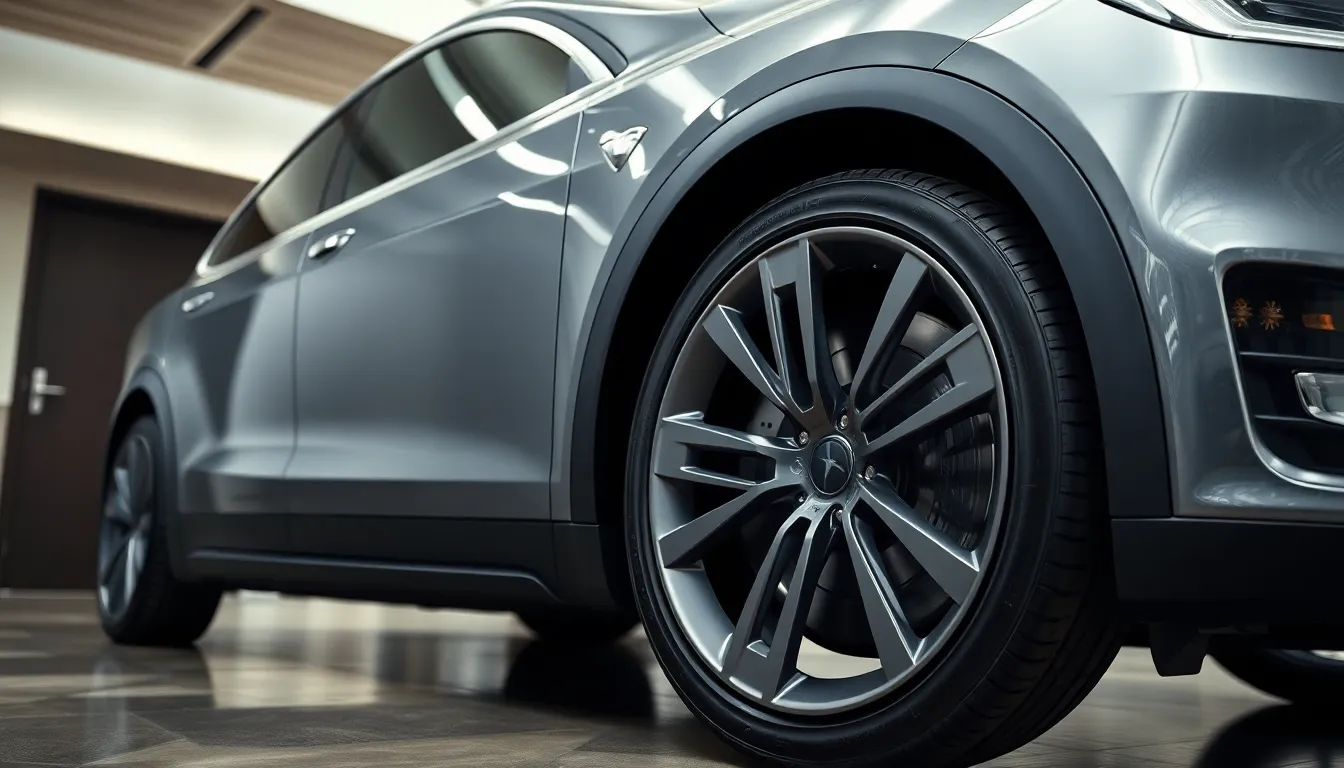
Tesla Model X tire replacement costs significantly exceed typical vehicle maintenance expenses due to the large wheel sizes and premium tire specifications. We’ve analyzed the financial impact of maintaining these high-performance tires across different replacement scenarios.
OEM vs Aftermarket Tire Pricing
OEM tires for the Model X cost between $300 to $400 per tire when purchased through Tesla service centers or authorized dealers. Continental and Michelin provide the majority of factory-equipped tires that meet Tesla’s performance specifications and safety standards. These premium tires deliver optimal driving dynamics and maintain the vehicle’s engineered performance characteristics.
Aftermarket tire options offer cost savings but come with trade-offs in performance and efficiency. Third-party tire manufacturers provide alternatives that reduce upfront expenses while potentially compromising ride quality and driving range. Aftermarket selections may require more frequent replacements due to different compound formulations and construction methods that don’t match Tesla’s exact criteria.
Brand compatibility becomes crucial when selecting non-OEM tires since Tesla’s systems integrate tire performance data for optimal energy management and safety monitoring.
Long-Term Ownership Expenses
Tire replacement cycles occur every 30,000 to 40,000 miles depending on driving style and tire type selection. Performance-oriented tires typically wear faster than standard all-season options due to softer compounds designed for enhanced grip and handling.
Maintenance service requirements include:
| Service Type | Frequency | Estimated Cost Range |
|---|---|---|
| Tire Rotation | 6,000-10,000 miles | $50-$100 |
| Wheel Alignment | As needed/annually | $100-$200 |
| Tire Balancing | During rotation | $40-$80 |
| Full Set Replacement | 30,000-40,000 miles | $1,200-$1,600 |
Performance tire considerations add substantial costs to long-term ownership since these specialized compounds prioritize handling over longevity. Model X owners using 22-inch performance setups experience accelerated wear rates compared to 20-inch configurations.
Tire and wheel maintenance represents one of the most important ongoing expenses for Model X ownership due to the large wheel sizes and high-performance requirements that exceed typical passenger vehicle standards.
Upgrading or Downsizing Your Tesla Model X Tires
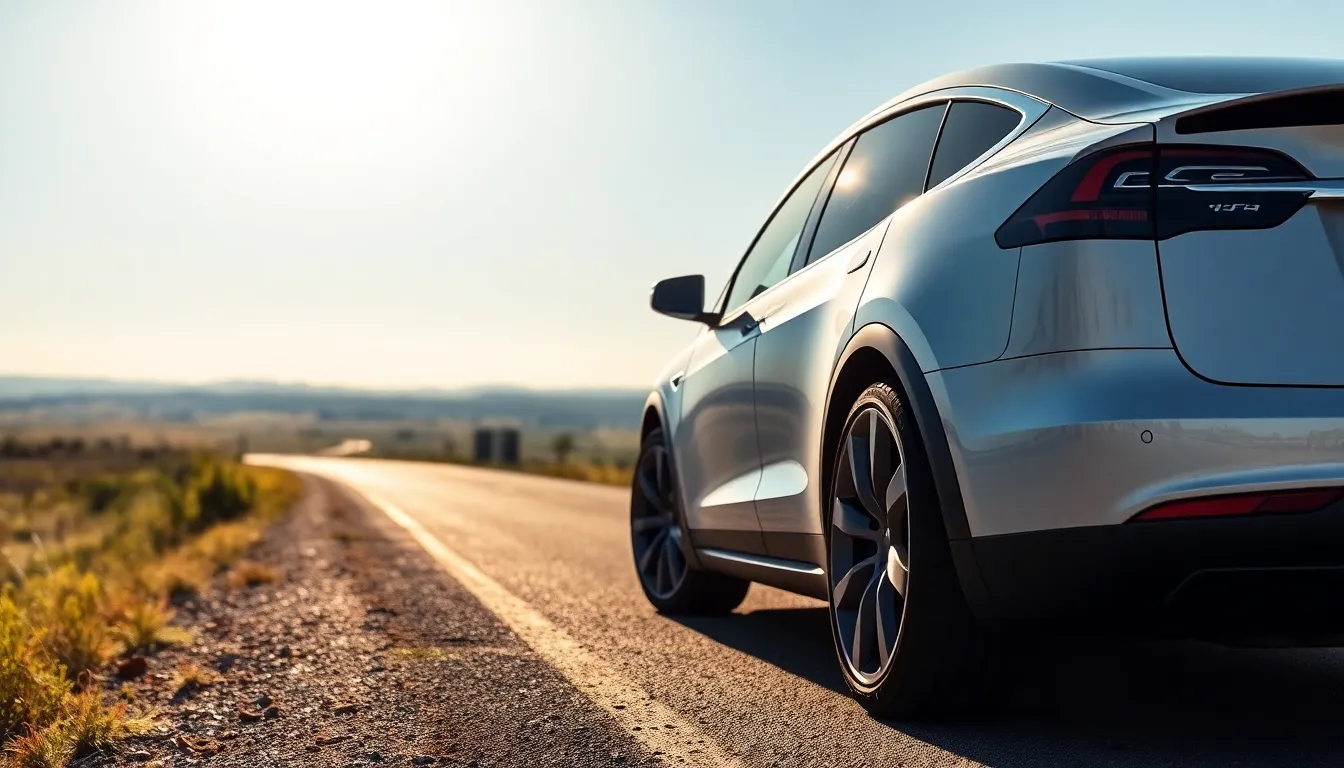
Changing your Tesla Model X tire size can significantly impact both performance and efficiency characteristics. We explore the key considerations for making informed decisions about tire size modifications.
Benefits and Drawbacks of Size Changes
Upgrading to larger wheels and tires transforms handling characteristics and visual appeal but comes with notable trade-offs. The 22-inch tire configuration provides enhanced cornering stability and improved road grip compared to standard 20-inch options. Premium appearance represents another compelling advantage as larger wheels create a more aggressive stance that many Model X owners prefer.
But, efficiency penalties accompany these visual and performance gains. Rolling resistance increases with larger tire sizes, reducing overall range by approximately 8-12% based on real-industry testing data. Replacement costs escalate significantly with 22-inch tires averaging $350-400 each versus $300-350 for 20-inch alternatives.
Downsizing benefits center primarily around efficiency improvements and cost reduction. Smaller tire profiles decrease rolling resistance, extending driving range by 10-15 miles per charge cycle. Ride comfort improves substantially as higher sidewall profiles absorb road imperfections more effectively than low-profile alternatives.
Performance compromises emerge with smaller tire configurations including reduced cornering precision and diminished high-speed stability. Road noise levels may increase slightly due to different tread patterns optimized for efficiency rather than quiet operation.
Compatibility and Safety Considerations
Load rating compliance represents the most critical safety factor when modifying tire sizes. Tesla Model X requires tires rated for minimum loads of 2,535 pounds per tire to support the vehicle’s 5,531-pound curb weight safely. We recommend verifying that any alternative tire size maintains or exceeds the original equipment manufacturer specifications.
Wheel compatibility parameters must align precisely to avoid damage or improper fitment. Bolt patterns, offset measurements, and hub bore dimensions cannot change when switching tire sizes. The Model X uses a 5x120mm bolt pattern with exact offset requirements that aftermarket options must match exactly.
TPMS functionality requires careful attention during tire size changes as sensor calibration may need adjustment. Factory tire pressure monitoring systems calibrate to exact tire volumes and pressure ranges. Modified tire sizes can trigger false warning signals if the system isn’t recalibrated properly.
Tread depth regulations mandate minimum 2/32-inch depths for legal operation, though we recommend replacement at 4/32-inch for optimal wet weather performance. Winter driving conditions require deeper tread depths of 6/32-inch minimum for adequate snow and ice traction.
Where to Buy Tesla Model X Tires
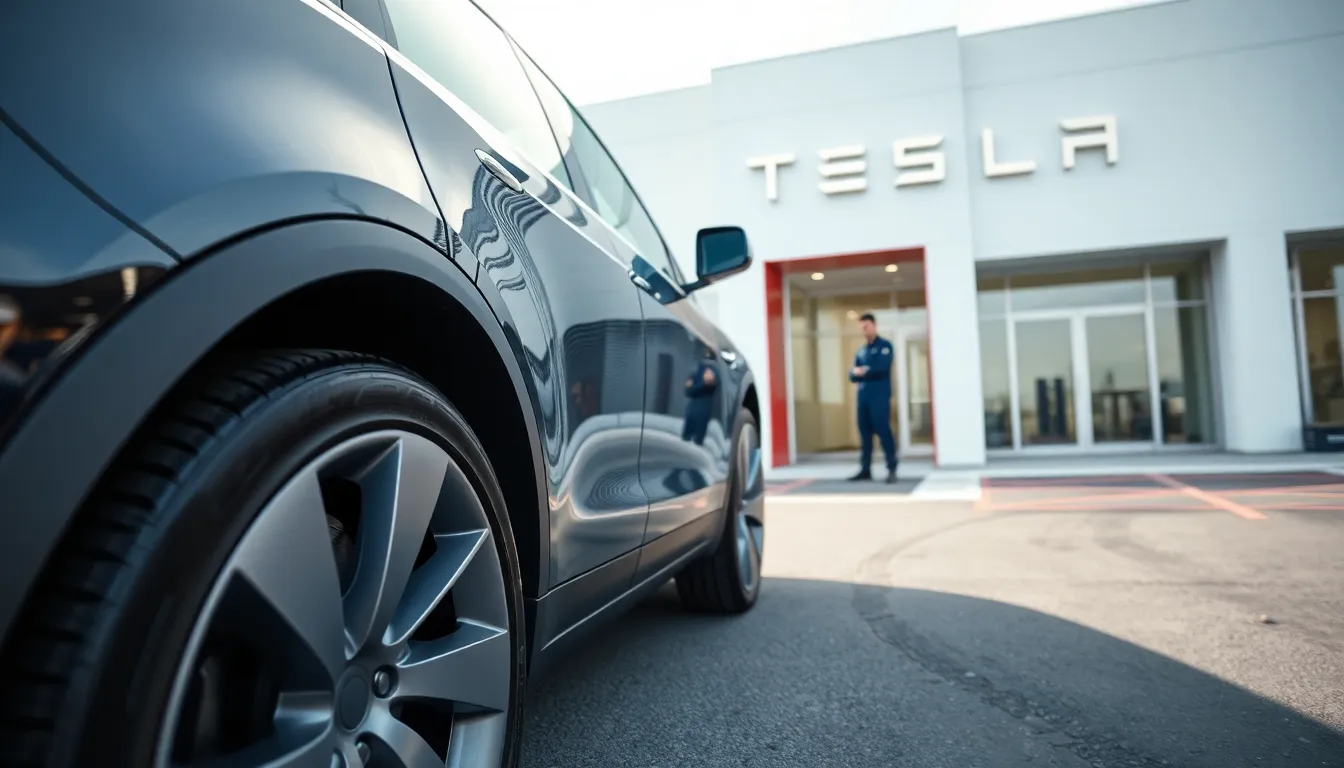
Finding the right place to purchase Tesla Model X tires ensures compatibility with your vehicle’s exact requirements and maintains optimal performance. We’ve identified several reliable options that provide genuine or compatible tires for your Model X.
Authorized Tesla Service Centers
Tesla service centers offer the most direct path to obtaining factory-approved tires for your Model X. These locations stock genuine Tesla-approved tires that match the exact specifications for both 20-inch configurations (265/45R20 front, 275/45R20 rear) and 22-inch setups (265/35R22 front, 285/35R22 rear).
Expert installation comes standard at Tesla service centers, ensuring proper TPMS pairing and software updates that maintain your vehicle’s monitoring systems. Technicians at these locations understand the exact requirements for Model X tire installations, including load ratings and performance specifications that affect your vehicle’s efficiency and safety.
Tesla service centers also provide warranty compliance for tire replacements, protecting your investment while ensuring that new tires meet the manufacturer’s standards for range efficiency and handling performance.
Third-Party Retailers and Installation Options
Major tire retailers including Discount Tire, Tire Rack, and Costco stock tires compatible with Model X specifications across both wheel configurations. These retailers often provide competitive pricing compared to Tesla service centers while maintaining quality standards for tire performance and safety.
Mobile installation services from many third-party retailers offer convenience by bringing tire mounting and balancing directly to your location. In-store services at these retailers typically include comprehensive tire installation, wheel balancing, and basic alignment checks that ensure proper fitment.
Online marketplaces such as Amazon and eBay expand purchasing options for Model X tires, though buyers must verify correct sizing and load ratings before ordering. We recommend confirming that any third-party tire purchase matches your exact Model X configuration to maintain handling characteristics and efficiency ratings.
| Retailer Type | Installation Options | Key Benefits |
|---|---|---|
| Tesla Service Centers | Professional installation with TPMS pairing | Genuine parts, warranty compliance, software updates |
| Third-Party Retailers | Mobile or in-store mounting and balancing | Competitive pricing, convenient locations |
| Online Marketplaces | Self-arrangement for installation | Broader selection, potential cost savings |
Conclusion
We’ve covered everything you need to know about Tesla Model X tire sizes to make informed decisions for your vehicle. The right tire choice significantly impacts your driving experience from efficiency and range to handling and safety.
Whether you’re replacing worn tires or considering an upgrade we recommend prioritizing your driving priorities. Choose 20-inch configurations for maximum range and comfort or opt for 22-inch setups when performance takes precedence.
Remember that premium tire brands offer the best value even though higher upfront costs. They deliver superior performance longevity and maintain your Model X’s sophisticated capabilities.
Take time to evaluate your exact needs climate conditions and budget before making your final selection. Your Tesla deserves tires that complement its advanced engineering and deliver the performance you expect.
Frequently Asked Questions
What tire sizes are available for Tesla Model X?
Tesla Model X tire sizes vary by year and trim level. Standard configurations include 20-inch and 22-inch options. For 2021-2024 models, Standard Range typically uses 255/45R20, Long Range uses 265/45R20 front and 275/45R20 rear, while Plaid models often feature 22-inch setups. Pre-2021 models have different specifications, so always check your specific model year and trim.
Should I choose 20-inch or 22-inch tires for my Model X?
20-inch tires offer better range efficiency and ride comfort due to reduced rolling resistance, making them ideal for daily driving. 22-inch tires provide superior handling and road grip but decrease overall efficiency by 8-12% and cost more to replace. Choose 20-inch for maximum range or 22-inch for enhanced performance and appearance.
What are the best tire brands for Tesla Model X?
Premium brands recommended for Model X include Continental CrossContact LX Sport and Pirelli Cinturato P7 for all-season use, and Michelin Pilot Sport for performance driving. For winter conditions, consider Michelin Pilot Alpin PA4 or Nokian Hakkapeliitta R3. These brands offer optimal performance, safety, and compatibility with Tesla’s specifications.
How much do Tesla Model X tires cost?
OEM Tesla Model X tires typically cost $300-$400 each, with premium brands like Continental and Michelin. Aftermarket options may offer savings but could compromise performance. Complete tire replacement every 30,000-40,000 miles can cost $1,200-$1,600 for a full set, plus installation and maintenance services.
Where should I buy Tesla Model X tires?
Authorized Tesla service centers offer factory-approved tires with expert installation and warranty compliance. Reliable alternatives include Discount Tire, Tire Rack, and Costco, which provide competitive pricing and installation options. Mobile installation services and online marketplaces offer convenience, but always verify tire specifications match your Model X requirements.
Can I change my Tesla Model X tire size?
You can upgrade or downsize tire sizes, but consider the trade-offs. Larger tires improve handling but reduce efficiency by 8-12% and increase costs. Smaller tires enhance efficiency and comfort but may compromise handling. Ensure compatibility with load ratings, wheel specifications, and TPMS functionality before making changes.
How often should I replace Tesla Model X tires?
Tesla Model X tires typically need replacement every 30,000-40,000 miles, depending on driving style and tire type. Monitor tread depth regularly and replace when it reaches 2/32 inches for legal operation or 4/32 inches for optimal performance, especially in winter conditions. Regular rotation and maintenance can extend tire life.
Do I need special tires for Tesla Model X winter driving?
Yes, winter tires significantly improve safety and performance in cold conditions. Recommended options include Michelin Pilot Alpin PA4 and Nokian Hakkapeliitta R3, which provide superior grip and control. Winter tires maintain flexibility in cold temperatures and offer better traction on snow and ice compared to all-season tires.

